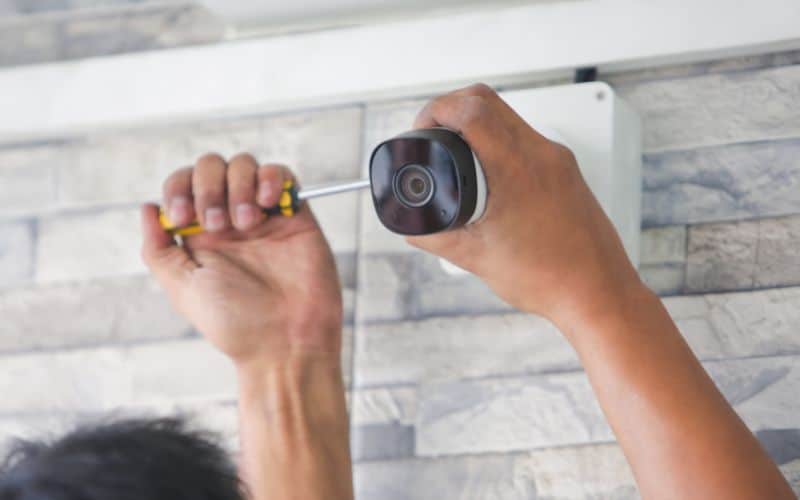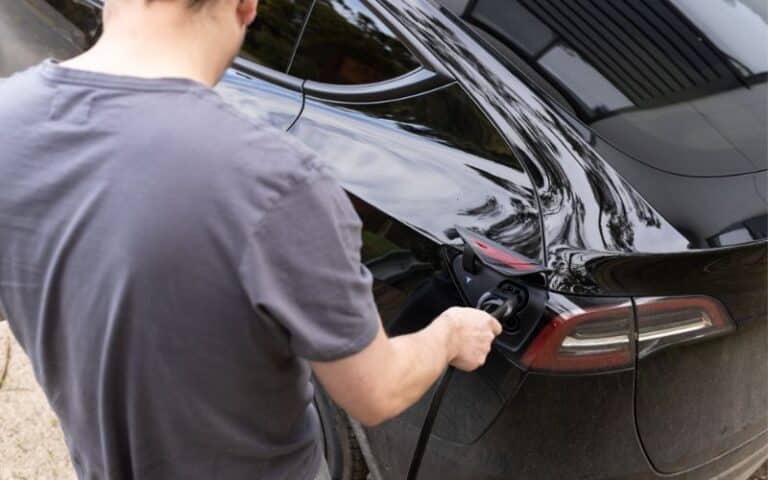NEMA 6-50 Installation Cost: The Hidden Truth!
Installing a NEMA 6-50 outlet is crucial for powering heavy-duty appliances, welders, or electric vehicle chargers.
The NEMA 6-50 is a specific electrical receptacle designed for high-powered devices requiring a precise installation process.
I’ll break down the key components contributing to the overall installation cost, from material expenses to labor charges.
On average, you can pay between $500 and $2000 for the installation, depending on your location. This cost will not include the price of the outlet itself, which can range from $25 to $500. Additionally, the cost could increase significantly if any electrical upgrades are needed to support the NEMA 6-50 outlet.
This article will comprehensively explain what to expect when installing a NEMA 6-50 outlet.
I will also provide a detailed guide to installing the NEMA outlet yourself.
How Much Does It Cost To Install a NEMA 6-50 Outlet?

Depending on the installer’s expertise, your location, and materials pricing, installing a NEMA 6-50 outlet costs around $500 to $2000.
The NEMA 6-50 outlet installation cost will depend on various factors specific to each installation.
However, to get an accurate estimate, it is best to consult with an electrician who can assess the project’s specifics.
The electrician can provide a more detailed estimate considering the abovementioned factors.
Once you have a more accurate estimate, you can make an informed decision about the installation cost.
With that in mind, here are the factors you should consider while calculating the installation cost:
#1. Material Cost
The NEMA 6-50 outlet’s cost will vary depending on your chosen brand and model. On average, a NEMA 6-50 outlet will cost between $25 and $50.
However, it is important to remember that higher-quality outlets often have a higher price tag.
When choosing an outlet, it is important to consider its durability and safety features.
In addition, the wiring also plays a role in the installation cost. The cost of the wiring and conduit will depend on the length of the run and the type of wiring and conduit used.
The wiring will need at least eight gauges for the 6-50 outlet, and the conduit must be at least 1/2 inch in diameter.
The length of the run will also affect the cost, as longer runs require more material. The total cost of the wiring and conduit will typically be between $100 and $300.
#2. Labor Costs
Hiring a licensed electrician is crucial for a safe and compliant installation.
Moreover, the labor cost will vary depending on the electrician’s hourly rate and the time required to complete the job.
On average, electricians charge between $50 and $100 per hour. Therefore, you must consider the time the electrician will require for the job.
However, there may be additional charges for complex jobs or other required services, such as upgrading the electrical panel or pulling permits.
#3. Permitting and Inspection
When obtaining a permit for the installation, it is important to check with your local building department to determine the specific requirements in your area.
Some areas may require a licensed electrician to perform the installation, while others may allow you to do the work yourself.
It is also important to note that permits and inspections are required for safety reasons and can affect your home insurance coverage.
The permit cost will vary depending on your location, but it ranges between $50 to $500 or more.
An inspection may also be required, incurring an additional cost of $50 to $300, depending on your location.
#4. Additional Costs
In addition to the labor and materials costs, a few other factors can affect the overall cost of a NEMA 6-50 outlet installation.
One is the cost of a new circuit breaker, which may be required to support the higher current rating of the new outlet.
In some cases, the existing electrical panel may not be able to accommodate the new circuit breaker, and you may require an upgrade.
This extra can add several hundred dollars to the project’s total cost. Another factor is the repair cost of any drywall damage during installation.
Can You Plug a NEMA 6-50 Into a 14-50 Outlet?
You cannot plug a NEMA 6-50 outlet into a 14-50 outlet.
The NEMA 6-50 outlet has a different pin configuration than the NEMA 14-50 outlet, which is incompatible.
The NEMA 6-50 outlet also has a higher power capacity than the NEMA 14-50 outlet.
Therefore, attempting to connect them could damage the outlet or the electrical system.
However, if you need to use a NEMA 6-50 outlet, it is best to consult with an electrician to install the appropriate outlet and wiring.
The number of poles is the main difference between the NEMA 6-50 outlet and the NEMA 14-50 outlet.
The NEMA 6-50 outlet has three poles, while the NEMA 14-50 outlet has four.
Moreover, the extra pole in the NEMA 14-50 outlet is for the neutral wire, which provides additional safety for higher power applications.
Since the NEMA 6-50 outlet does not have this neutral wire, it is unsafe to connect it to a NEMA 14-50 outlet.
Here’s a table showing the difference between the NEMA 6-50 and 14-50 outlets
| Aspect | NEMA 6-50 Outlet | NEMA 14-50 Outlet |
|---|---|---|
| Configuration | 3-pole, 3-wire | 3-pole, 4-wire |
| Grounding | There is no dedicated neutral wire | Dedicated neutral wire |
| Receptacle Pins | Three pins (two hot, one ground) | Four pins (two hot, one neutral, one ground) |
| Usage | Industrial and welding applications | Electric vehicle charging stations |
How Long Does a NEMA 6-50 Outlet Installation Take?
NEMA 6-50 outlet installation should take two to four hours, but this can vary depending on the job.
In addition, the length of time required to install a NEMA 6-50 outlet depends on several factors.
Some of these factors include the job’s complexity, the electrician’s experience, and the existing electrical setup.
Before beginning the installation, the electrician must assess the existing electrical setup and determine the best location for the new outlet.
They will then run the necessary wiring and connect the outlet to the power source. In addition, the electrician also needs to consider your local regulations and permits.
Can You Install a NEMA Outlet Yourself? A Detailed Guide
Installing a NEMA outlet yourself is possible, but it is not recommended unless you have the proper training and experience.
NEMA outlets are 240-volt outlets that require special wiring and connections. Therefore, if you do not install them correctly, they can pose a serious risk of electrical shock or fire.
However, electrical work carries inherent risks, and if you’re unsure about any aspect, it is best to leave the installation to a professional.
Before proceeding with the installation, here are the tools and materials you need for the installation:
- NEMA outlet
- Electrical wires (appropriate gauge and length).
- Electrical box.
- Wire nuts.
- Screwdriver set.
- Wire stripper.
- Voltage tester.
- Power drill.
- Cable clamps.
- Safety gear (insulated gloves, safety goggles).
Here are the steps you’ll require for the installation:
#1. Turn Off the Power
Before beginning any work on the electrical system, turning off the power at the main breaker box is crucial.
This process will prevent any risk of electric shock during the installation process.
After turning off the power, it is important to test whether it is off using a voltage tester. Testing it will ensure that you can carry out the installation safely.
#2. Choose the Outlet Location
Next, choose the location for the new NEMA 6-50 outlet. Ensure to install the outlet in a location that is easily accessible and close to your Tesla EV.
It is also important to consider whether sufficient clearance around the outlet exists for easy access.
#3. Install the Electrical Box
After determining the outlet’s location, the next step is to install the electrical box. You can do this by cutting a hole in the drywall using a drywall saw.
Once you have cut the hole, install the electrical box. Ensure to secure the electrical box to the wall studs using screws.
#4. Run Electrical Wires
Once you have installed the electrical box, the next step is to run the wires connecting the outlet to the circuit breaker.
It is important to use the proper gauge wire for the amperage of the circuit breaker and to follow all local electrical codes. Use appropriate cable clamps to secure the wires.
#5. Strip and Connect Wires
To make the electrical connections, the first step is to strip the wires using a wire stripper.
After stripping the wires, connect the wires to the corresponding terminals on the NEMA outlet.
The terminals typically include black to brass screws, white to silver screws, and green or bare wire to the green screw for grounding.
#6. Attach the Outlet and Close the Box
Now that you have made the electrical connection, you can install the wired NEMA outlet in the electrical box.
First, insert the outlet into the box, ensuring it is properly aligned. Then, secure the outlet to the box by tightening the screws on the sides of the outlet.
After installing the outlet, double-check the wiring to ensure everything is correct. Once you have checked the wiring and ensured everything is working correctly, close the outlet.
Replace the cover plate and tighten the screws to secure it. Then, turn the power back on at the circuit breaker. Finally, plug in a device and test the outlet to ensure it works properly.






